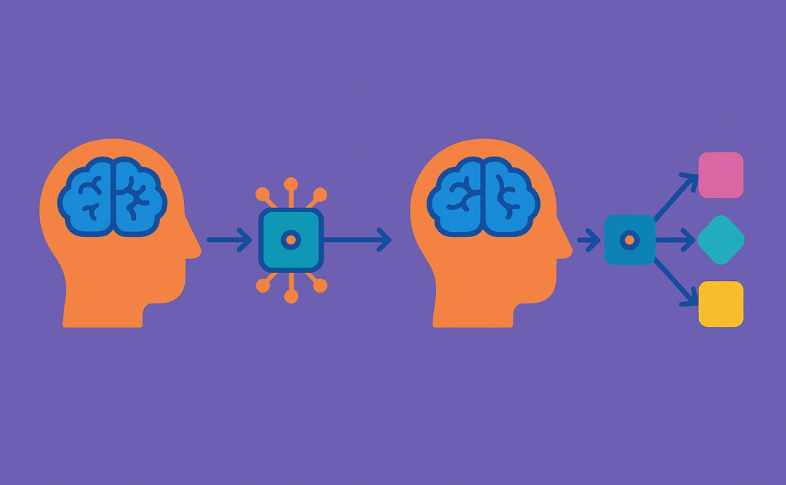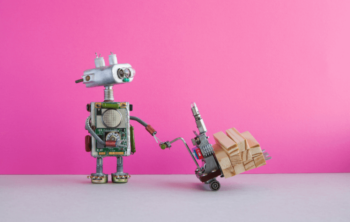Artificial intelligence is dazzling the business world — where language models write code, digital agents schedule meetings, and algorithms make billion-dollar decisions — it’s easy to believe that process, in its step-by-step form, is obsolete.
But that belief is not just premature. It’s dangerous.
At the core of every successful AI application is something deeply human and rigorously structured: a deterministic process. These are the workflows, checklists, and standard operating procedures that define how work gets done. They are not relics of a pre-AI era. They are the scaffolding that makes AI safe, scalable, and usable.
AI Is Brilliant, But It’s Also a Bit of a Wild Card
Artificial intelligence is, by its very nature, probabilistic. It guesses the next best word, the most likely action, or the most relevant insight based on patterns in vast datasets. That’s not a flaw—it’s what gives AI its power to adapt, generate, and optimize.
But probabilistic doesn’t mean precise. It means unpredictable. AI can hallucinate facts, misinterpret context, or go off-script in ways that range from mildly confusing to catastrophically wrong.
To be truly useful in business, AI needs constraints. And constraints come from process.
What Deterministic Processes Actually Do
A deterministic process is a promise: If X happens, do Y. No guesses. No improvisation. Just clarity.
These processes spell out how tasks should be performed, by whom, and in what order. They encode compliance requirements, safety protocols, approval workflows, and organizational standards. In regulated industries, they are non-negotiable. But even in fast-moving startups, they are the only way to achieve repeatable, reliable outcomes.
Without process, your AI is like a GPS without a map: confident, persuasive — and often wrong.
AI + Process = Scalable Intelligence
The real magic happens when AI and deterministic processes work together. Here’s how:
| Deterministic Process | AI Agent | Outcome |
|---|---|---|
| Defines the workflow | Executes within that structure | Reliable, repeatable automation |
| Assigns roles and approvals | Automates specific steps | Accountability is preserved |
| Handles compliance and escalation rules | Detects anomalies, flags risks | Smarter, safer decisions |
| Offers audit trails and documentation | Fills in the blanks, summarizes, assists | Transparent, auditable operations |
Think of process as the operating system and AI as the app. One without the other? You’re setting yourself up for issues — or worse, systemic failure.
The Temptation to Skip the Hard Stuff
Some businesses believe they can shortcut structure. They throw AI at problems without understanding the workflow behind them. And for a while, it may seem to work.
But then comes the inconsistency. One team documents a process with AI, another skips it entirely. A customer complaint escalates with no clear ownership. A regulatory deadline is missed because the “AI forgot.”
Without process, AI doesn’t scale brilliance. It scales chaos.
The Smarter Future: Human-AI Workflows With Guardrails
The most forward-thinking companies are now designing workflows that intentionally blend people, AI agents, and deterministic processes. These “human-in-the-loop” systems are the antidote to AI drift.
At Way We Do — a platform that helps organizations embed process into everyday operations — we’ve seen this model in action:
- Teams define SOPs and checklists, embedding them into daily work.
- Roles (whether human or AI) are assigned to specific steps.
- AI is integrated intelligently via 7,000+ tools, without overriding governance.
- Every task, decision, and approval is tracked — making compliance traceable and real.
This isn’t bureaucracy. It’s clarity. And in a world of increasing complexity, clarity is a superpower.
James Clear, author of Atomic Habits, wrote: “You do not rise to the level of your goals. You fall to the level of your systems.”
AI doesn’t change that. It reinforces it.
Deterministic processes are not the antithesis of AI innovation. They are its enabler. They ground AI’s power in purpose. They turn predictions into performance.
So before you unleash AI across your organization, ask a simpler question:
Do you have a system worth scaling?





